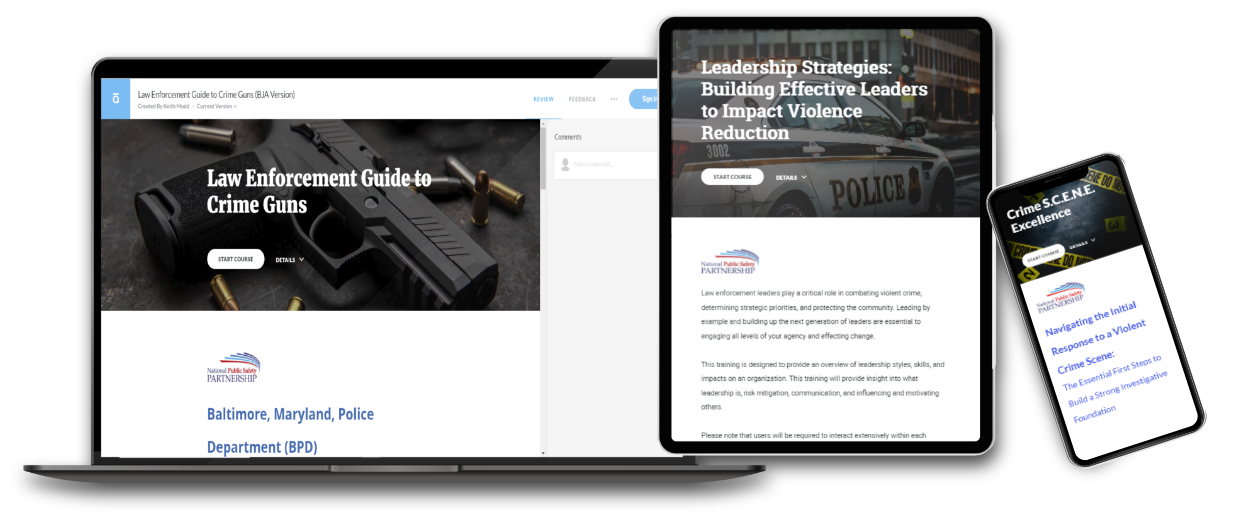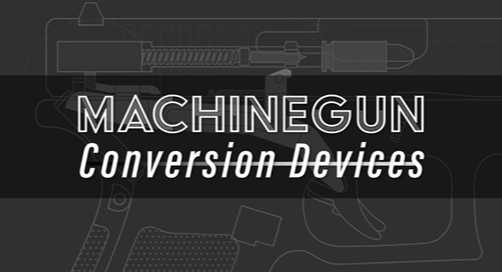Welcome to the National Public Safety Partnership’s
Virtual Academy!
In an effort to deliver meaningful and effective resources to PSP sites and beyond, the PSP team, in collaboration with leading law enforcement experts and practitioners, has developed interactive, virtual courses on law enforcement topics identified to be of great importance and shared interest to PSP network-wide and beyond. These courses are available nationwide at no cost to requesting law enforcement professionals.
Interested law enforcement professionals and public safety agencies can request no-cost PSP Virtual Academy access by selecting the "Enroll Now!" button above. We look forward to learning with you.

Three Dimensions of Constitutional Policing
Constitutional policing is a law enforcement strategy designed to reduce crime, promote public safety, and pursue justice for all. This strategy is successfully implemented through the fair, unbiased, and effective enforcement of the law that is consistent with our constitutional principles, democratic values, and community expectations.
The Three Dimensions of Constitutional Policing virtual course aids law enforcement professionals in learning how to operationalize the principles of constitutional policing by leveraging guidance, real-life scenarios, and supporting resources. This course uses the “Three Dimensions”—The Law, The Policing Profession, and The Community—to produce sustainable results in the law enforcement profession. Students will learn the importance of constitutional policing, relate core constitutional principles to modern-day policing, and receive guidance in applying this strategy to their daily activities. This is accomplished through various lessons, videos, and other engaging activities, followed by short knowledge checks to assess comprehension.
Law Enforcement Guide to Crime Guns
The initial recovery and identification of a crime gun is one of the most important steps in any investigation. This step is even more critical for agencies whose communities are experiencing high incidences of violent gun crime or are expanding their utilization of crime gun intelligence.
These firearms provide valuable investigative leads and are subsequently scrutinized during all aspects of the investigation that follow the recovery. Despite the importance of this initial step, firearms are frequently misidentified, leading to missed opportunities for lead development, case connection, and successful prosecution.
This training, which was developed in close collaboration with ATF, provides an overview of crime guns and firearm identification to enhance officers’ and agencies’ capacities to correctly recover and identify crime guns.

Machinegun Conversion Device
A machinegun conversion device is a part, or combination of parts, designed and intended for use in converting a semiautomatic Glock pistol or an AR-style rifle into a machinegun. These devices, often called “switches,” “chips,” or “auto sears,” are not gun accessories and are considered machineguns under the law. This online course is designed to familiarize law enforcement officers with these conversion devices both for enforcement of gun laws and for officer safety.
Conversion devices can covert semiautomatic pistols and rifles to machineguns in less than 60 seconds, resulting in a rate-of-fire of more than 1,000 rounds per minute. These devices are fast and easy to assemble, require minimum skills, and are easily removed after use, creating potential risks for the public and law enforcement officers alike. Conversion devices are advertised using misleading names and deceptive descriptions intended to avoid detection by law enforcement and defeat protocols used by internet vendors. Often the devices are advertised with the assertion that the purchase and possession of the devices are lawful. This is not true. A conversion device on its own is considered an illegal machinegun under federal law and cannot be possessed, even without a pistol or rifle. Both the National Firearms Act and the Gun Control Act regulate machineguns.
Navigating NIBIN Leads via the GETS System
The National Integrated Ballistic Information Network’s (NIBIN) information flow for many departments is a consistent stream of information expressed as NIBIN leads. It is not uncommon for a department to receive 10, 15, or even 25 of these NIBIN leads every week. This includes new leads linking two events as well as new events being added to existing leads. Each NIBIN lead links a shooting to another shooting or a recovered crime gun to a shooting, or a complex combination of those. NIBIN leads received by most departments can quickly outpace available resources to address them.
This training is designed to provide an overview of navigating NIBIN leads via the geography, events, time, and solvability factors (GETS) System.
GunStat: A Data-Driven Approach to Address Gun Violence
Gun crime is a complex problem impacting many communities and neighborhoods. The U.S. Department of Justice, Bureau of Justice Statistics, estimates that in the United States, more than 400,000 violent crimes are committed with a firearm annually. In addition, the Centers for Disease Control and Prevention reports that firearms were the cause of death in more than 70 percent of all homicides. As we think about the complexity of gun crime, it is important to remember that these statistics are much more significant than numerical indicators. Each crime represents real people, real families, and entire communities that are impacted by the wide-ranging consequences of gun violence.
It also is important to understand that the primary perpetrators of gun violence represent a very small segment of a community. However, despite their small number, unabated gun offenders perpetuate a cycle of violence that leaves a path of fear and devastation in neighborhoods.
GunStat is a nationally recognized, data-driven management strategy that focuses on reducing gun crime through the targeted identification and prosecution of felony gun offenders. The strategy involves a collaborative approach among police, local prosecutors, and the United States Attorney’s Office to systematically track gun offenders through the criminal justice system. Through this process, GunStat provides real-time intelligence on trends that promote the systematic enforcement and prosecution of violent gun offenders.
During this training session, participants will learn how to leverage data and collaboration to implement the GunStat model.
Ghost Guns: Identifying and Tracing Privately Made Firearms
One only has to review the day’s news to understand that ghost guns, or privately made firearms, are a rapidly growing area of concern for law enforcement and for our communities. It is hard to determine the exact frequency and volume of privately made firearm (PMF) recoveries associated with criminal behavior because this is an emerging problem in most of the country and, as a result, law enforcement has not yet established uniform procedures for identifying and documenting their recovery.
This training is designed to provide participants with the knowledge, skills, and abilities needed to identify, accurately describe, and document PMFs and a uniform methodology for accounting for them in the Bureau of Alcohol, Tobacco, Firearms and Explosives’ (ATF) Firearms Tracing System (FTS).

